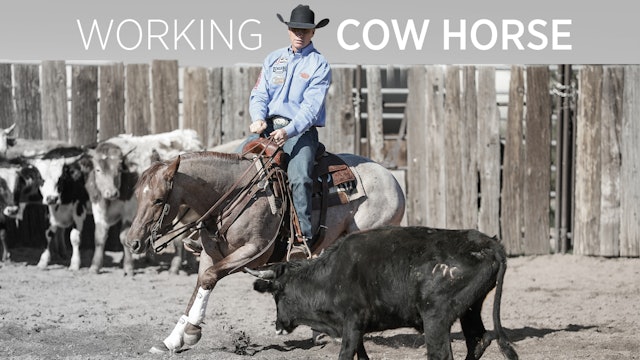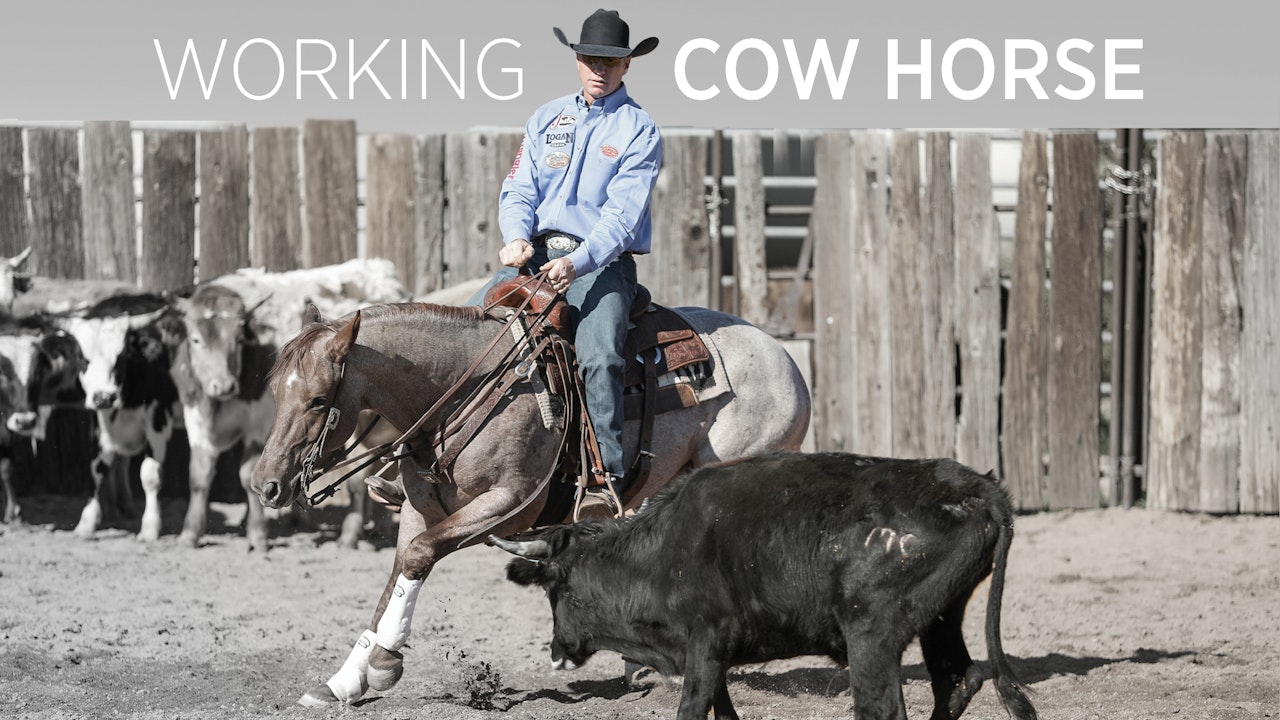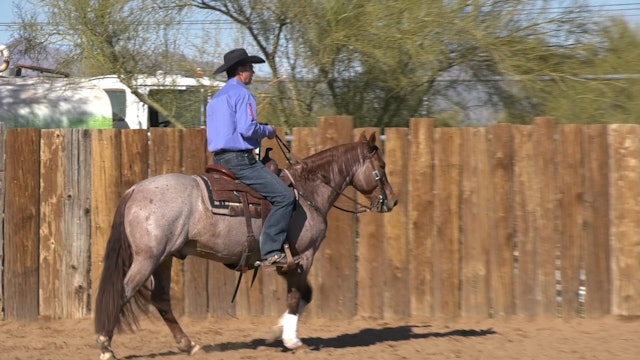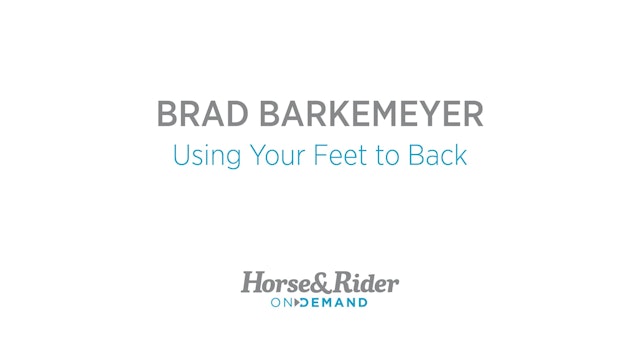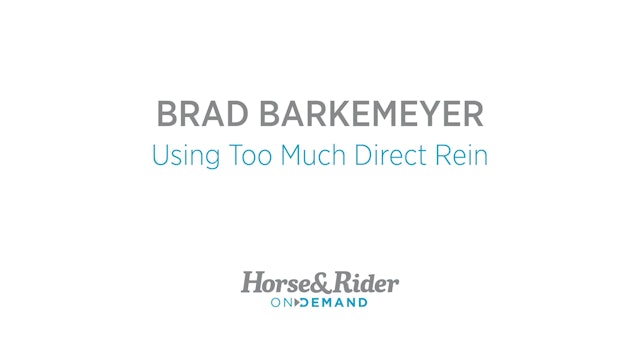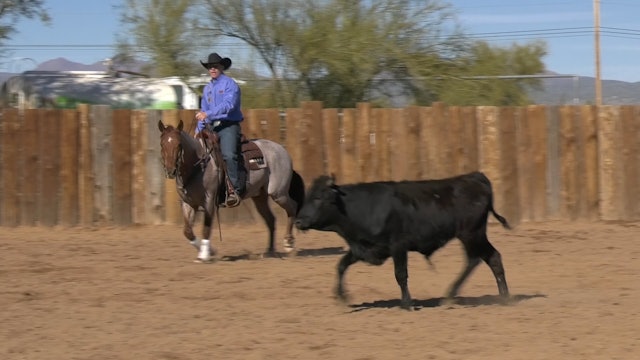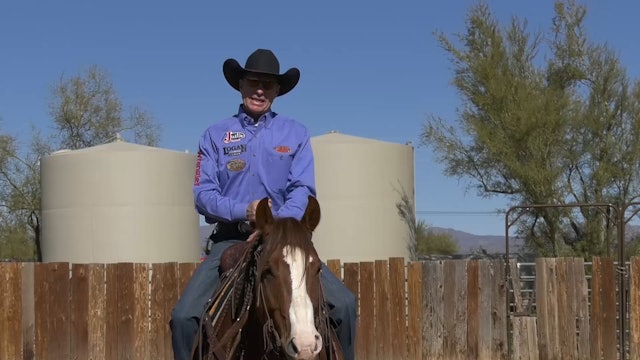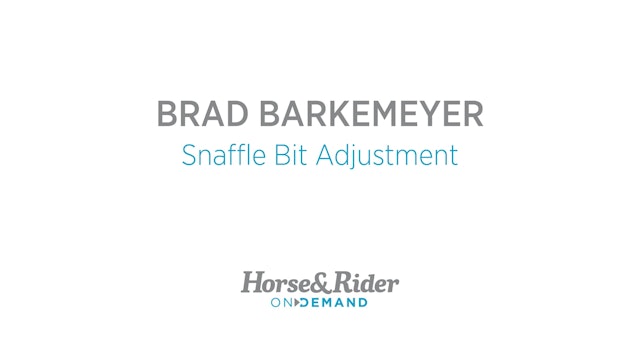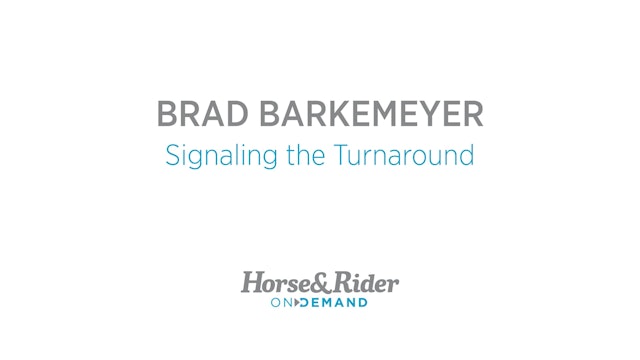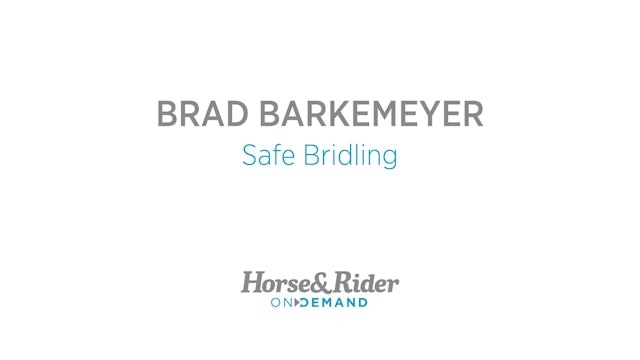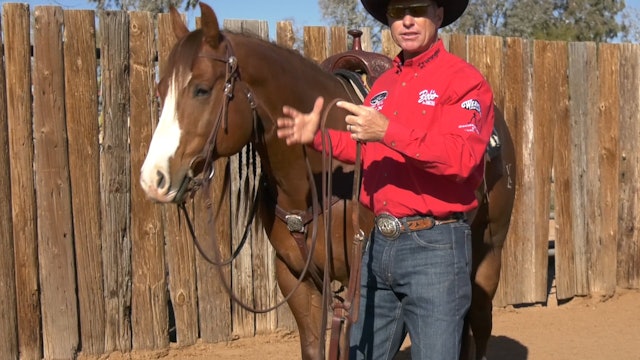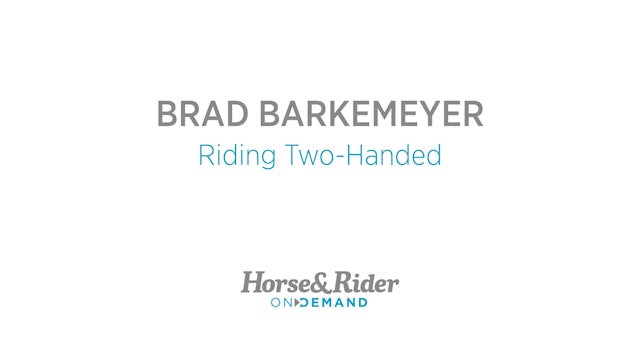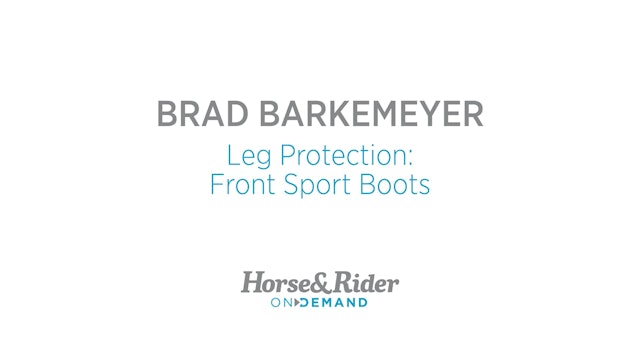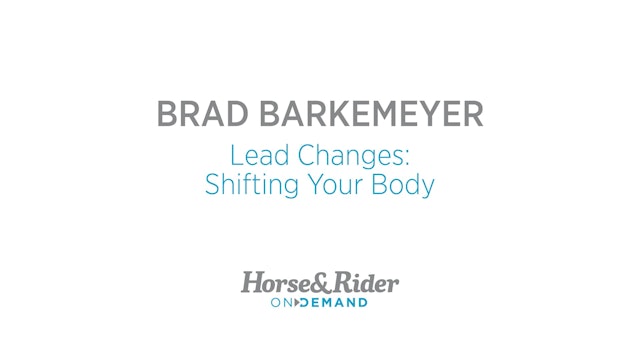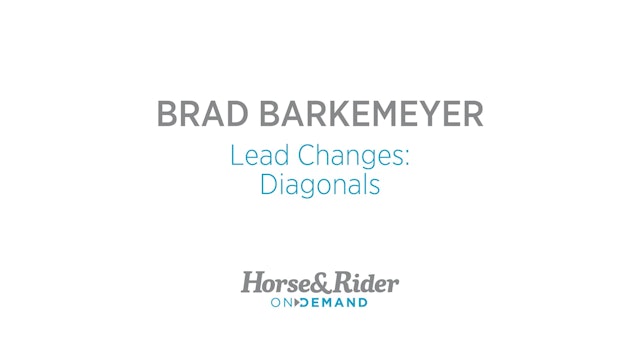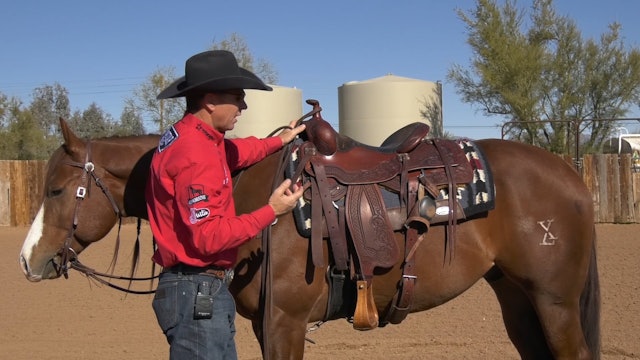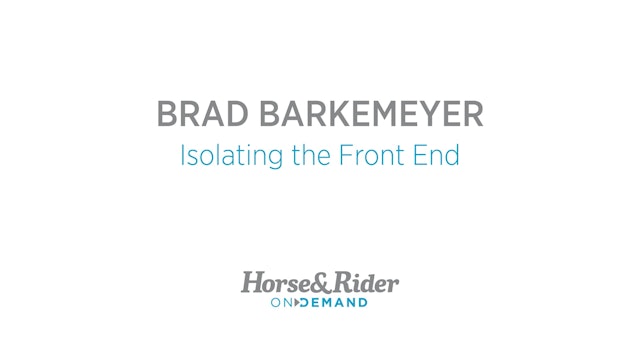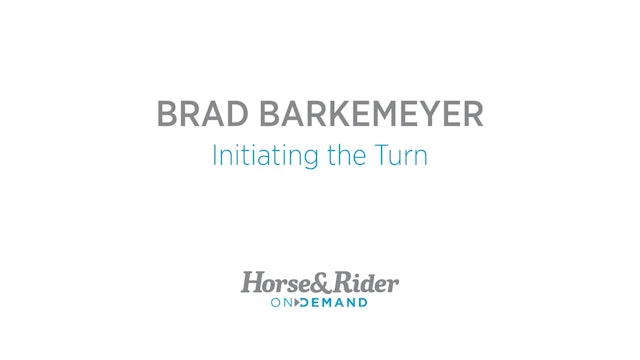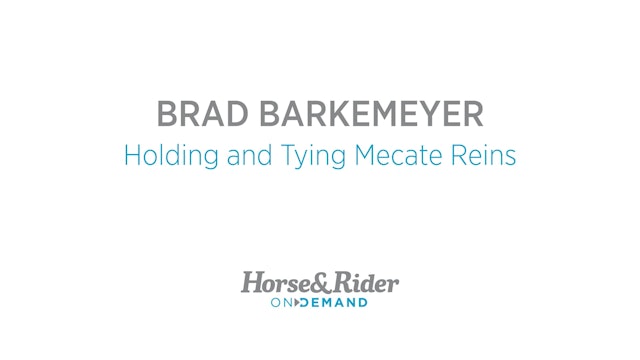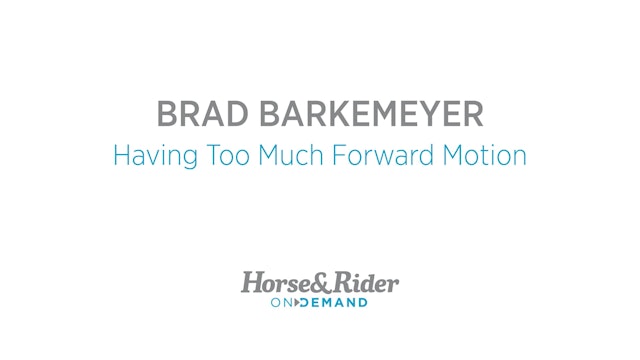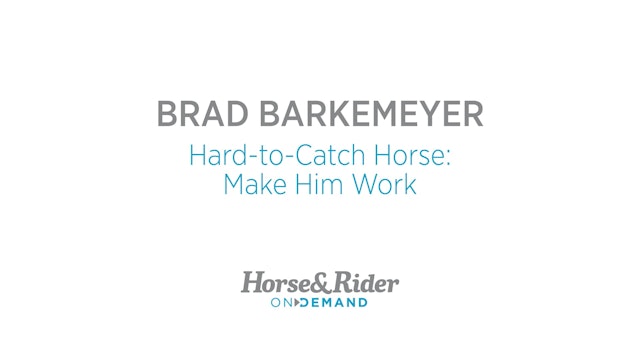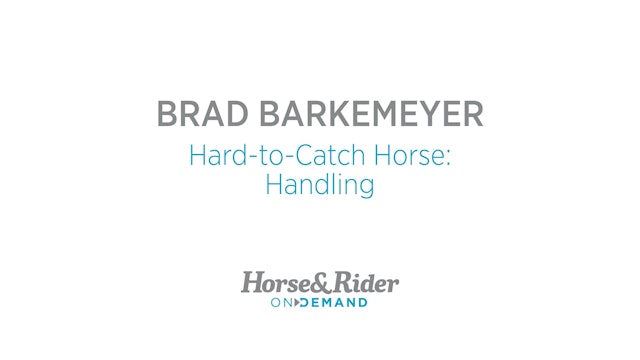Working Cow Horse
This high-energy Western performance discipline blends sliding stops, fast spins, and quick pivots with the grit and strategy of handling cattle. Ride alongside champions like Brad Barkemeyer, Winston Hansma, and more as they share the drills, patterns, and mental game it takes to succeed in both ranch and competition settings. You’ll learn how to sharpen your horse’s responsiveness, perfect positioning, and execute maneuvers with the finesse judges reward.
From reading a cow’s movement to executing clean turns down the fence, this series covers it all—cutting, boxing, roping, and more—with a focus on building clear communication between horse and rider. Whether you’re stepping into the pen for the first time or chasing your next high score, Working Cow Horse on Ride TV is your playbook for power, precision, and winning rides.
-
Riding a Cowy Horse
What's a cowy horse? Brad Barkemeyer explains what it means to be cowy and how to ride one.
-
When to Use a Snaffle Bit
While you see younger horses use a snaffle bit when they're competing in cow horse events, using a snaffle bit is great for horses of all ages. Brad Barkemeyer explains when he likes to use a snaffle bit on his horses.
-
Backing Up:Use Your Feet
Does your horse get stuck when you're asking for a backup? You might not be using your feet enough to keep your horse moving. Brad Barkemeyer explains why it's important to use your feet when you're asking for a backup.
-
Using Too Much Direct Rein
Sometimes more isn't the answer. Brad Barkemeyer explains how using too much direct rein can cause problems when you're working your horse.
-
Understand a Legal Quit
What is a legal quit? When you're competing in cow horse events and showing in the herd work, it's important to know when you can legally quit on a cow. Brad Barkemeyer breaks down the basics of herd works and when you can stop working your cow.
-
Teaching the Turnaround
A good turnaround in a cow horse class is extremely important. Brad Barkemeyer shows you how to introduce the turnaround to your horse.
-
Snaffle Bit Adjustments
Ensure your snaffle bit is fitted properly by using Brad Barkemeyer's tips for adjusting it.
-
Signaling the Turnaround
While it might look like a rider isn't doing a lot to cue their horse when they're in the show pen, subtle hand and leg cues are all you need to successfully signal your horse to turn. Brad Barkemeyer teaches you how to cue your horse.
-
Safe Bridling
Being able to safely bridle your horse is basic horsemanship 101. Brad Barkemeyer shows you how he bridles his horses to ensure he and his horse stays safe.
-
Running Martingale
Brad Barkemeyer breaks down the running martingale and why someone might use it in their training program.
-
Common Mistakes When Riding Two Handed
Brad Barkemeyer shows you some of the common mistakes he sees riders make when they ride two handed.
-
Leg Protection: Rear Boots
Sometimes you need to use back sport boots on your horse. Brad Barkemeyer breaks down when to use back boots and how to properly place them on your horse's legs.
-
Leg Protection: Front Boots
Know when to use leg protection on your horse and learn how to properly use front sport boots with help from Brad Barkemeyer.
-
Lead Changes: Shift Your Body
When asking for a lead change, your body position is just as important as your horse's. Brad Barkemeyer shows you how he shifts his body weight so his horse is able to change leads.
-
Lead Changes:Diagonals
In the progression of teaching a horse lead changes, this diagonal exercise is a great way to keep your horse honest, and listening to your riding cues. Brad Barkemeyer shows you a drill you can add to your riding session.
-
Latigo Safety
It's important that your latigo stays in your keeper when you're riding. If it comes undone during a ride, it can be a danger to both horse and rider. Brad Barkemeyer shows you how you can ensure your latigo stays in the keeper.
-
Isolating the Hindquarters
The next step is working on isolating your horse's hindquarters. Just like when you worked on the front end, it's important to be able to control your horse's hindquarters. Brad Barkemeyer shows you how to do that.
-
Isolating the Front End
Isolating the front end and moving it around helps you gain more control over your horse's body. Brad Barkemeyer shows you how he works with a horse to move the front end over.
-
Introduction to the Flag
The flag is a huge training tool when teaching a horse how to work cattle. Brad Barkemeyer shows you how he likes to introduce a horse to working the flag so they don't become overwhelmed or scared of it.
-
Initiating the Turn
In order to have a successful turnaround the first couple of steps in your turnaround need to be correct. Brad Barkemeyer demonstrates how he sets a horse up to have a good turnaround.
-
Tying Mecate Reins
In the cow horse, you'll see riders use mecate reins often. Brad Barkemeyer breaks down the basics of how to tie mecate reins and hold them so you can be successful while working your horse.
-
Too Much Forward Motion on a Cow
Having too much forward motion when you're working a cow can cause a run to speed up. If you're new to working cattle it's important to stay correct and not let your horse get too forward during a run. Brad Barkemeyer helps you maintain your speed.
-
Make Your HardtoCatch Horse Work
If you're dealing with a hardtocatch horse, Brad Barkemeyer explains the importance of making that horse work until he chooses to put his attention on you and stand quietly.
-
Handling a HardtoCatch Horse
When you go to catch your horse, does he run away from you? Brad Barkemeyer shows you some round pen work you can do to build a better relationship with your horse.

